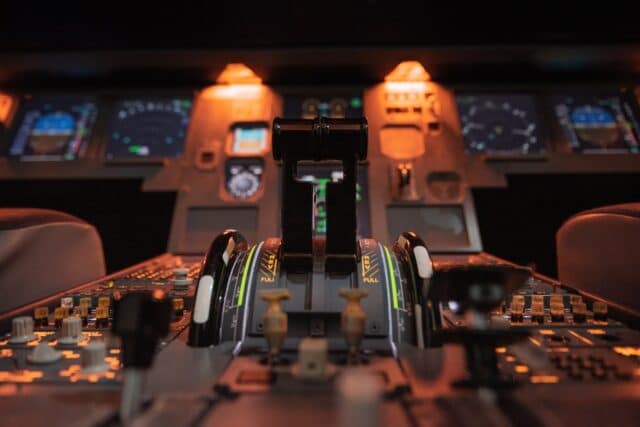Questions and Answers
I think it is time for another edition of Questions and Answers for discussion in the comments. We had some great conversations last time and a few more questions have come up that we might enjoy looking at.
If you have an aviation question that you would like to ask, please post in the comments. If you aren’t already cleared to comment, be patient and I promise I will get the question up as soon as possible. If you are reading the comments and you know the answer, please take the time to hit “reply” to the comment. This means that the answer is threaded to be clearly under the question and share your knowledge. You do not need to be a pilot or even in the aviation industry to answer a question but do try to stick to what you know.

I think this will be a lovely way of sharing aviation information and if it works, I will pick up any unanswered questions here and use them to seed the new post.
Here are some previous questions:
Tammy: Is EGPWS aware of the airplane’s vertical position relative to the glideslope? If not, is there something else on the panel that could/would trigger an alert? The only IFR landing I have ever watched from the cockpit was in a small plane with analog gauges, so I don’t know what happens in an airliner, but it seems like there ought to be a way to sound an alarm when the plane is close to the runway threshold and still not stabilized on the glideslope. i’m curious how that works in an airliner.
Chris (and me): In the Ukrainian final report on the Antonov An-12 registration UR-CAH, what do they mean when they refer to the “internal engines”? (My guess was “inboard” but maybe someone has a better idea?)
AndrewZ: How big a problem is 5G interference with avionics, and how much is just media hype?








(Status: enthusiastic student.)
For Tammy’s question, the answer is “sometimes”. Class B TAWS doesn’t have to include the mode 5 (“GLIDESLOPE”) warning; class A does (and the FAA requires class A on all but the smallest commercial aircraft, other authorities similarly). Modern EGPWS runs off a terrain and airfield database plus GPS, rather than (or in addition to) a downward-looking radar altimeter, and such databases are not complete; the Tu-154 that crashed on approach to Smolensk in 2010 and redefined Polish politics by killing most of the major figures in it did have EGPWS, but Smolensk airfield wasn’t in its database, so the instrument wouldn’t have had glideslope information. I have no information as to whether that might have been the case for the An-12 at Lviv, though it seems all too plausible for a short-notice change of plans.
Re: the 5G issues, the Airline Pilots Association has a detailed page at https://www.alpa.org/resources/aircraft-operations-radar-altimeter-interference-5G , I recommend scrolling down to “Guidance and Limitations by Aircraft Manufacturers” to see specific effects on specific aircraft.
AN-12 internal engines: from the accident report:
I’m reading this to indicate that the “internal” engines are #2 and #3, and the “external” engines are #1 and #4. Since the engines are commonly numbered left to right, the “internal” engine are therefore the two engines closest to the fuselage.
From a reader, in my email:
I don’t speak Ukrainian, but in Russian, the word “vnootri” (near as I can spell it in English) means “inside” but, depending on context, may be used to mean, colloquially, “not outside” in some local dialects. (Much the same as saying “not bad” instead of “good”.) I’d say it’s almost certain that “internal engines” is a mistranslation for “inside engines” which the English-speaking world (and America) would refer to as “inboard engines.” 😊
Q: What kinds of pilots routinely wear parachutes, or have them available?
The answer wouldn’t be “Youtubers who stage their own crashes” by any chance?
I think it turned out that even for him, that was an exception. He seems to have uploaded videos of other flights without parachutes.
Military fighter pilots, mostly
I have a vague recollection that the pilots of the small planes (Cessna 172/182/206) I skydived out of ~30 years ago wore parachutes. I don’t know whether the pilot(s?) of the Twin Otter wore a parachute as the cockpit was walled off from the body of the plane.
Well, Mendel, this would seem an easy one, the following come to mind..
-Test pilots,
-Combat pilots
-Pilots involved in serious aerobatics, including high performance gliders,
A celebrated case was when the late Neil Williams too a Zlin trainer for a routine practice sortie. He did not wear a parachute.
Unknown to him another pilot has overstressed the aircraft ands reset the g-meter to a lower value – it was normal to leave the last reading for the next pilot to see, only it has been tampered with. During the session one wing started to break away. Williams managed to roll inverted which brought the wing back in place. He flew the aircraft under total control to near the ground before he rolled it the right way back up again. He suffered only minor injuries.
I remember reading about this and just not being able to believe that he pulled it off.
We were flying from Seattle (SEA) to Vancouver Canada (YVR) on an Alaska Air Lines Bombardier Q400 Turboprop (about 75 passenger max) and it was probably less than 1/4 filled. We all took our assigned seats but before takeoff the pilot asked us all to move to the middle of the craft. Told this was for balance. Is this common when there is so few passengers on the smaller aircrafts? Any other reason for this?
It is not unheard of that the captain wanted to re-arrange the seating,